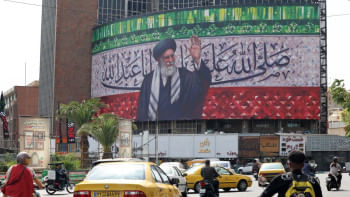A major blow if it remains the same

US President Donald Trump has unveiled a bold shift in global trade policy through the introduction of the "Reciprocal Tariff Policy." On July 7, 2025, President Trump sent letters to the leaders of 14 countries, announcing the imposition of tariffs ranging from 25 percent to 40 percent on specific products starting August 1, 2025, unless new trade agreements are reached.
The countries impacted by this policy change are as follows: Japan, South Korea, Tunisia, Malaysia, and Kazakhstan are set to face a 25 percent tariff. South Africa and Bosnia and Herzegovina will encounter a 30 percent tariff.
Bangladesh and Serbia will be subject to a 35 percent tariff. Cambodia and Thailand will see a 36 percent tariff. Laos and Myanmar will experience a 40 percent tariff.
The inclusion of Bangladesh in this list holds particular significance, especially for its export sector, notably the ready-made garment industry, which is expected to experience the impact. The anticipation of a favourable tariff rate from the US government was high, mirroring our expectations to reciprocate the same.
Vietnam, having already secured a 20 percent tariff rate despite a trade deficit of USD 124 billion, managed to export $137 billion to the US and import $13 billion, maintaining the 20 percent rate with zero duty.
In contrast, Bangladesh, with a trade deficit of only $6.20 billion, faced different circumstances, but of course, there is a lot to see about what they are doing with China, India, and Pakistan—our other close competitors for the US market.
The trade barriers released by USTR for Bangladesh in March 2025 undoubtedly played a crucial role in shaping this decision. Considering the decision-making process involving trade barriers alongside the trade deficit is crucial.
Addressing these barriers promptly is essential, especially as we prepare for our LDC graduation. These barriers impact not only tariff negotiations in the US market but also influence our country's global business reputation and relationships with partners. It is imperative to tackle these challenges to enhance our business landscape and international standing.
At the same time, diversifying into more alternative markets is crucial to reduce reliance on dominant markets such as the US. Unexpected issues can arise at any moment. In 2024, the global apparel market was valued at $557.50 billion, with the US accounting for $79 billion. This highlights the potential for growth in other markets beyond the US.
The recent imposition of a 35 percent tariff on all exports from Bangladesh has sparked concerns regarding potential repercussions.
With the USA being Bangladesh's top export destination, the impact of this tariff is anticipated to be significant. Apart from the immediate threat of reduced export orders, the implications extend to job losses and economic instability within the country. The rise in duty could lead to multifaceted challenges beyond just a decline in trade, affecting various aspects of Bangladesh's economic landscape.
To address this challenging situation, Bangladesh must take immediate action, including advocating for changes in tariff policies by engaging with American importers/brands, resuming discussions on US-Bangladesh trade relations promptly by involving the highest authorities of Bangladesh with utmost priority, and highlighting the humanitarian and economic importance of Bangladeshi products, especially concerning workers' livelihoods, women's empowerment, and social contributions. Effective strategic planning and communication, along with the establishment of public-private partnerships, are essential in navigating the economic and geopolitical pressures resulting from this development.
(The writer is additional managing director of Denim Expert Ltd and a former director of the Bangladesh Garment Manufacturers and Exporters Association.)

 For all latest news, follow The Daily Star's Google News channel.
For all latest news, follow The Daily Star's Google News channel. 



Comments